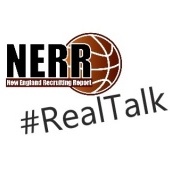#RealTalk - Video & Scouting Services

In yesterday’s piece “Where did you play this summer?” we detailed how the new NCAA recruiting calendar, and consequent limitations on getting exposure to college coaches, created more need than ever for student-athletes to make sure they were in the right places, both before and during the live periods.
The amount of coaches at a particular event during the live period provides immediate feedback about the quality of the exposure. The reality though is that coaches follow talent, not the other way around. The more good teams and prospects are at an event, the more likely coaches will attend.
Outside of the live period though, the feedback isn’t nearly as obvious and it creates the potential for all types of misconceptions.
When unable to attend events themselves, college coaches are going to rely on two things – video and recruiting services.
Not all video and recruiting services are equal though, not even close.
With regard to video, cameras may be rolling when you attend an event, but that doesn’t mean college coaches are watching or able to identify who is who on that video.
The truth of the matter is that coaches rely most on video services that capture an entire game, not just quick highlight plays, and even those full videos are useless unless they include a mechanism for coaches to identify the players they’re seeing. Forget about the camera angles or quality of the footage, no college coach is going to be able to spot new prospects by watching a video that doesn’t identify the players.
Such technology is far more than just video and almost non-existent outside of the three major sneaker circuits. Even on those circuits, when teams put players in different numbers for different events, it negates the value of the enhanced technology. Stats, or at least the only reliable ones you'll find in the grassroots basketball world, are also a byproduct of this video technology.
In short, video is great, but the amount of quality video out there for college coaches to properly utilize, especially outside of the sneaker circuits, is very limited.
As for scouting services, there’s a ton of fake news out there, often times aimed at creating an impression of false relevance for the person(s) operating the service so that they can better solicit information or even sell their events.
Nowadays, new services pop up all the time, but even if the service is legitimate, that doesn’t mean college coaches rely on it.
If it’s not an established publication or author like NERR, HSBI, Corey Evans, Evan Daniels, Brian Snow, Josh Gershon, or Norm Evans, here are some questions you should ask:
How long has your service been in existence?
Are you certified by the NCAA?
How many schools subscribe?
How many prospects do you cover each year?
How do you decide which players you evaluate?
What is your background and qualifications to make such evaluations?
Honest and accurate answers to those questions would reveal the number of services that are actually legitimate, authored by qualified evaluators, and able to impact a broad scope of college coaches is perhaps even smaller than the number of quality video outlets.
Between the new NCAA recruiting calendar and the increased pollution of the grassroots basketball space by false advertising and misinformation, it’s more difficult than ever before for players and families to navigate the processes of exposure and recruiting, especially when you can't see where the college coaches are or hear what they're saying.
Understanding where to be, not just during the live periods, but leading up to them, can be an important part of the puzzle.

